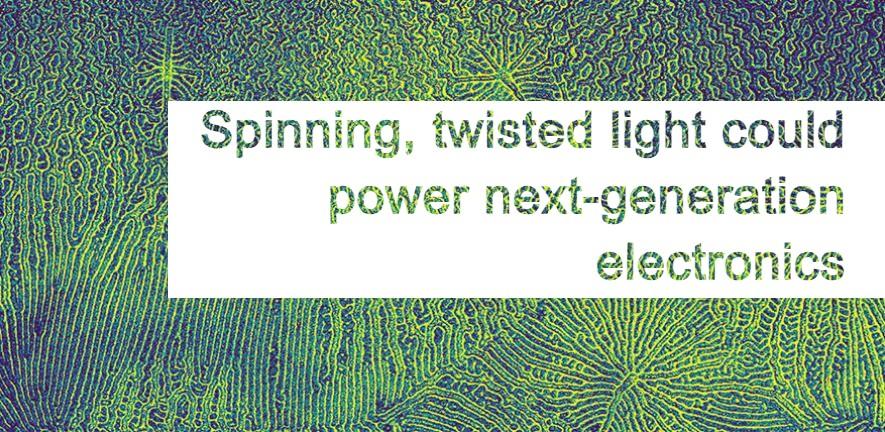
Researchers have advanced a decades-old challenge in the field of organic semiconductors, opening new possibilities for the future of electronics.
The researchers, led by the University of Cambridge and the Eindhoven University of Technology, have created an organic semiconductor that forces electrons to move in a spiral pattern, which could improve the efficiency of OLED displays in television and smartphone screens, or power next-generation computing technologies such as spintronics and quantum computing.
The semiconductor they developed emits circularly polarised light—meaning the light carries information about the ‘handedness’ of electrons. The internal structure of most inorganic semiconductors, like silicon, is symmetrical, meaning electrons move through them without any preferred direction. However, in nature, molecules often have a chiral (left- or right-handed) structure: like human hands, chiral molecules are mirror images of one another. Chirality plays an important role in biological processes like DNA formation, but it is a difficult phenomenon to harness and control in electronics.
"When I started working with organic semiconductors, many people doubted their potential, but now they dominate display technologyUn. like rigid inorganic semiconductors, molecular materials offer incredible flexibility—allowing us to design entirely new structures, like chiral LEDs. It’s like working with a Lego set with every kind of shape you can imagine, rather than just rectangular bricks,.” Professor Sir Richard Friend, Cavendish Laboratory, University of Cambridge
One promising application for chiral semiconductors is in display technology. Current displays often waste a significant amount of energy due to the way screens filter light. The chiral semiconductor developed by the researchers naturally emits light in a way that could reduce these losses, making screens brighter and more energy-efficient.
The work is part of a decades-long collaboration between Friend’s research group and the group of Professor Bert Meijer from the Eindhoven University of Technology. “This is a real breakthrough in making a chiral semiconductor,” said Meijer. “By carefully designing the molecular structure, we’ve coupled the chirality of the structure to the motion of the electrons and that’s never been done at this level before.”
The chiral semiconductors represent a step forward in the world of organic semiconductors, which now support an industry worth over $60 billion. Beyond displays, this development also has implications for quantum computing and spintronics—a field of research that uses the spin, or inherent angular momentum, of electrons to store and process information, potentially leading to faster and more secure computing systems.
Rituparno Chowdhury, Marco D. Preuss et al. ‘Circularly polarized electroluminescence from chiral supramolecular semiconductor thin films.’ Science (2025). DOI:10.1126/science.adt3011
Read the full University of Cambridge article
Image credit: Samarpita Sen, Rituparno Chowdhury

